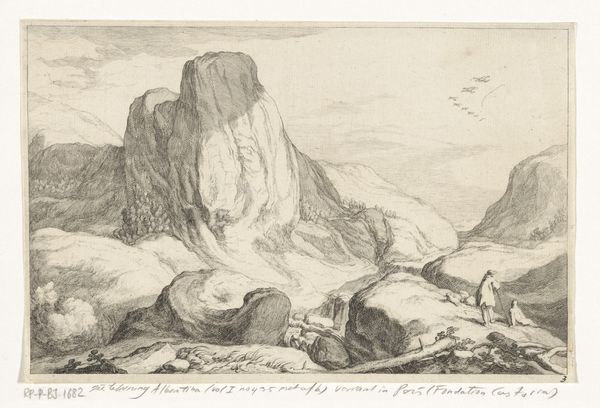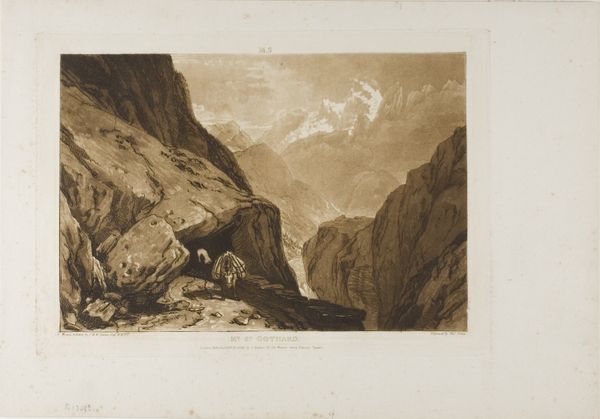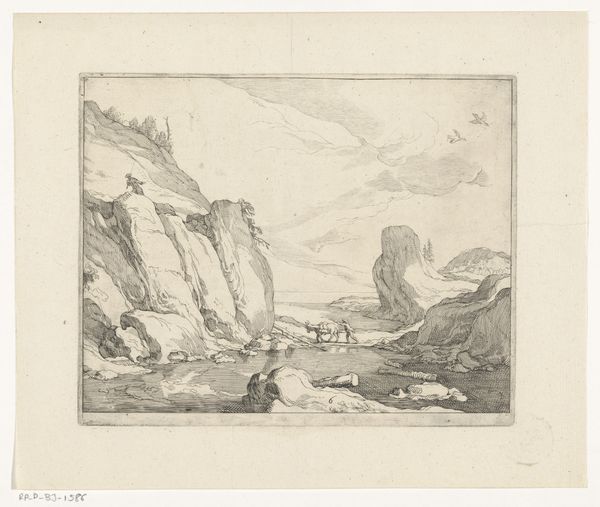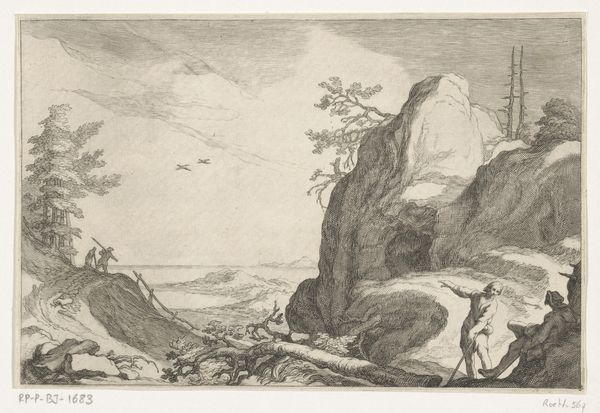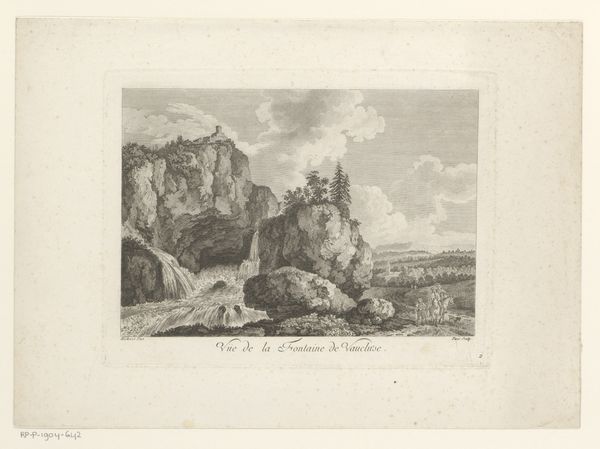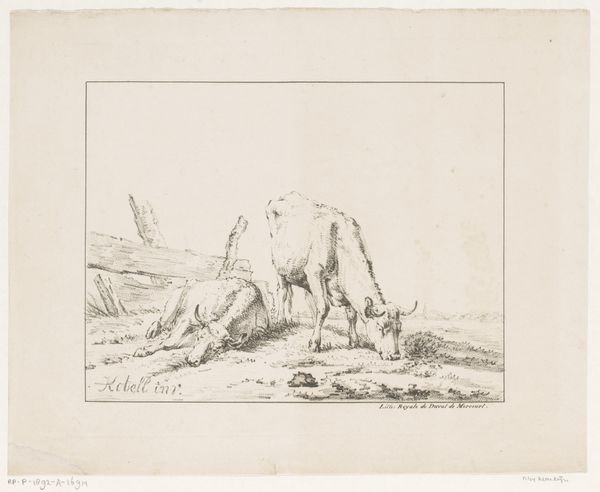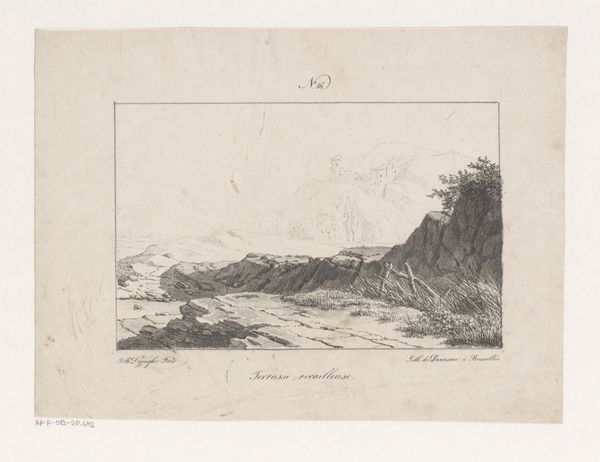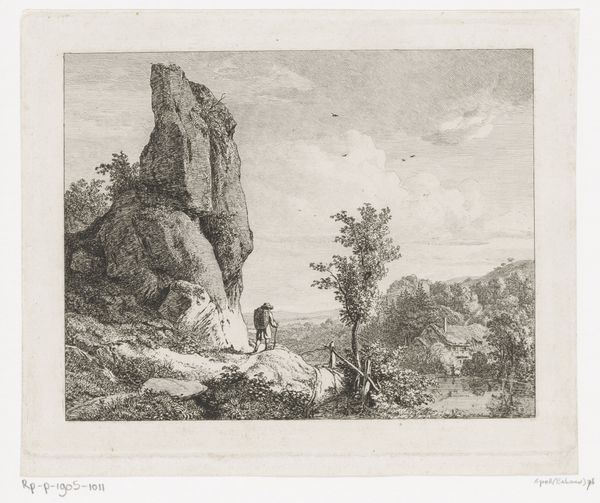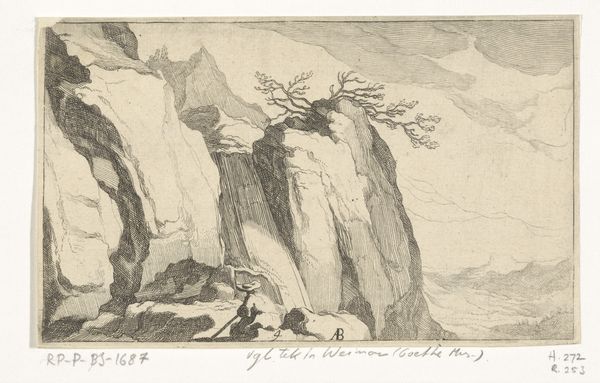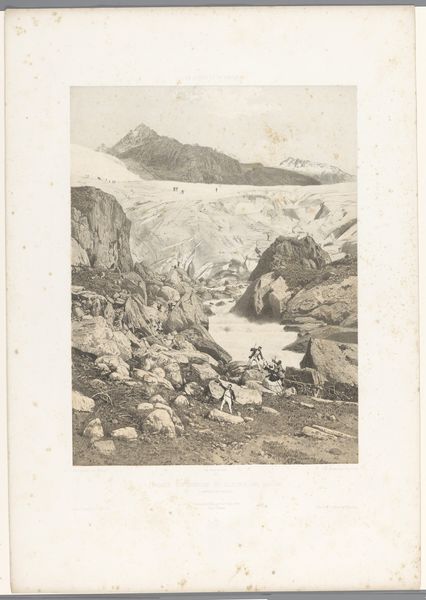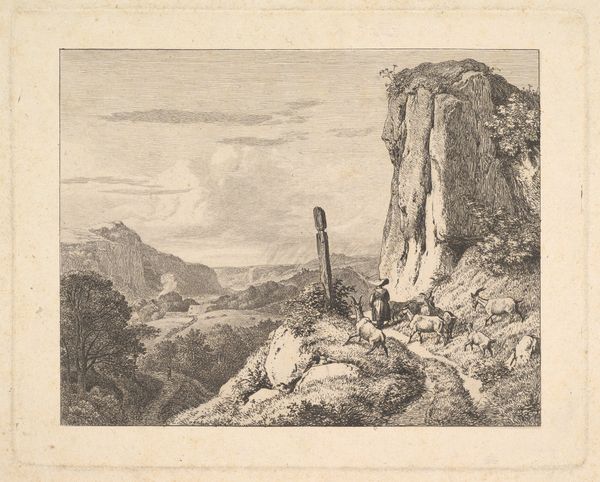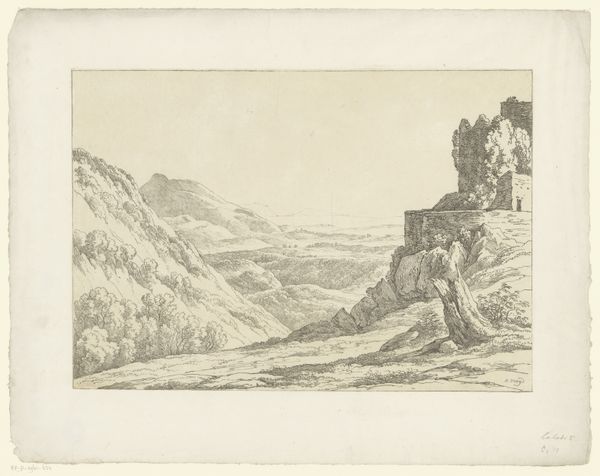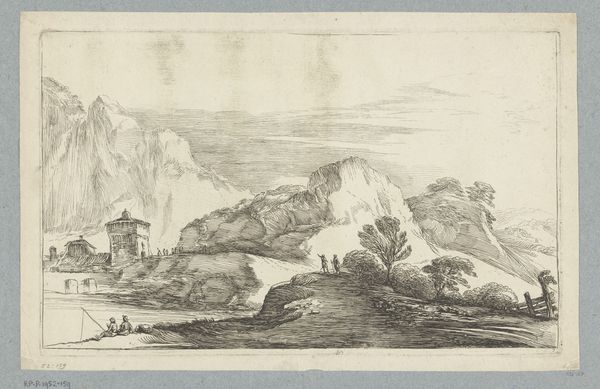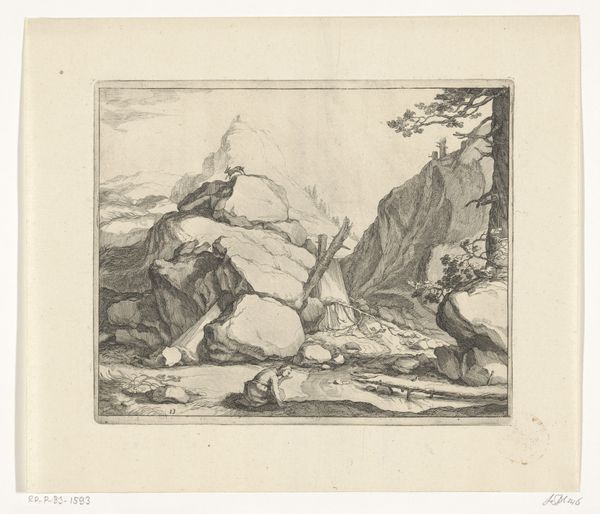
Dimensions: height 138 mm, width 82 mm
Copyright: Rijks Museum: Open Domain
Editor: So, here we have Johann Esaias Nilson's etching and watercolour, "Portret van Anton Ignaz von Fugger-Glött", created sometime between 1769 and 1788. It has this quite dreamlike quality... almost as if it were plucked out of a story book. How do you interpret this work? Curator: Beyond the illustrative nature, let's consider this landscape within its historical context. The late 18th century saw a rise in interest in the picturesque, in controlled and aestheticized versions of nature. Do you see that play between wildness and order here? The composition is carefully arranged to create a feeling, a certain controlled experience. Editor: I can see what you mean by ‘controlled’. It is not as unruly as untouched nature, like someone has carefully curated its chaos. Is that maybe reflected in the subject-matter and title? Curator: Potentially. Think about the function of portraiture. Often it’s not just about depicting an individual, but also projecting power and status. Now, how might this portrait within a landscape subvert or reinforce traditional portraiture? What statements could it be making? Editor: Perhaps it's suggesting that status is interwoven with the landscape? That belonging to the land grants this stature, a rootedness… the figure being so small against the backdrop maybe suggests a fragility in the grand scheme of things. Curator: Exactly. And what might that say about how the ruling classes are perceived or wish to be perceived? Does it reinforce ideas of class? Do you think there's an attempt to seem grounded amidst the political upheavals that soon followed in Europe? Editor: I never thought about how the location of a portrait could signify even more than the figure itself! Curator: Art is a product of and reflection upon our societies. Examining the “what” of art in relation to the “why” helps us reveal the values and ideas promoted and normalized in any given context. It always teaches us something new. Editor: That is incredibly interesting. I’ll definitely remember this new perspective when looking at other landscapes. Thanks for sharing!
Comments
No comments
Be the first to comment and join the conversation on the ultimate creative platform.
